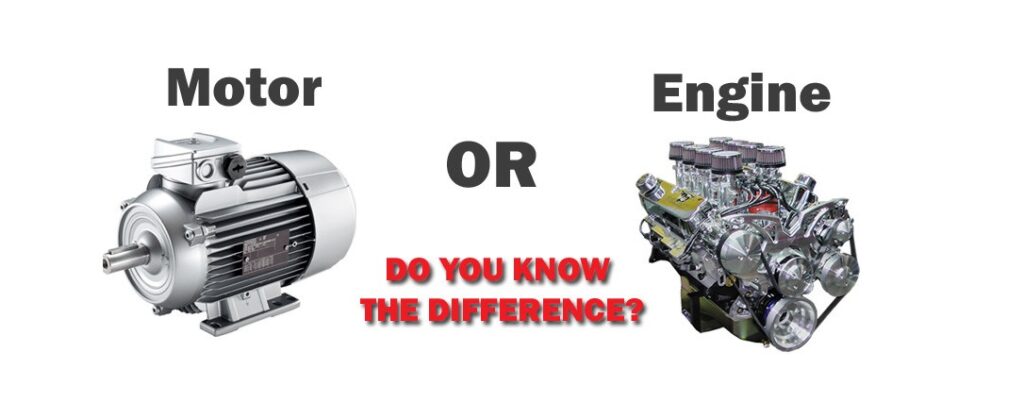Differences Between Motor and Engine – When it comes to mechanics, especially in auto mechanics, the explanation about whether a car has a motor, or an engine has been greatly debated. In fact, even famous dictionaries do not provide full clarity on this matter and define the two words in a similar, albeit not the exact method. Both motor and engine refer to an instrument used to transform some form of power into mechanical motion. They are sometimes employed interchangeably in casual discussion, but technically speaking, they are not equal. The engine is a device that employs heat or combustion to generate motion, and the motor is an instrument that converts electric or hydraulic power into motion.
Depending on your application, you can find all the information you need about motor or engine equipment and devices on Linquip’s website. Linquip’s team of experts is available to answer any questions you may have about motors or engines. Check out Linquip’s article, “What is Power Generation?” to learn more about these machines.
You can also register as a Linquip Expert and access all services Linquip offers. Are you interested in writing a Guest Post for Linquip? By using the Linquip platform, you can submit content as a guest.
What are the Differences Between Motor and Engine?
As devices and technologies evolve, language should stay on its feet if we expect to understand each other when we discuss them. English speakers are especially flexible at adapting to progress. They tend to coin new terms, change old meanings, and permit words that are no longer beneficial to pass from traditional usage. “The etymologies of engine and motor reflect the method language evolves to provide what’s happening in the world,” says Mary Fuller (An MIT literature professor).
The Oxford Dictionary describes a “motor” as a device that supplies motive energy for a vehicle or other systems with moving components. Similarly, it tells us that an engine is a machine including moving components that transforms power into motion. “We use the terms interchangeably now,” says Fuller. “But basically, they meant very different machines.”
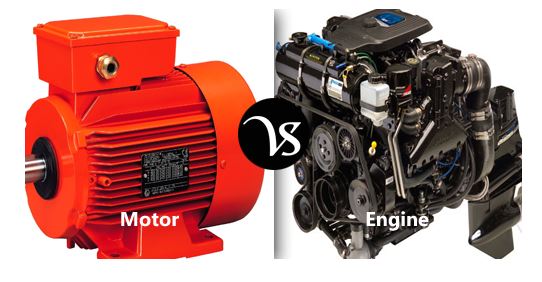
“Motor” is originated in the Classical Latin movere, “to move.” It first mentioned the propulsive force, and later, to the person or system that moved something or caused the movement. “As the word went from French to the world, it was utilized in the form of ‘initiator,’” says Fuller. “A person could be playing a role like a motor of a political organization or a plot.”
By the end of the 19th century, the Second Industrial Revolution had changed the landscape with steel mills and steamships, factories, and railways, and a new word was required for the mechanisms that energized them. Originated in the idea of motion, “motor” was the logical option, and by 1899, it had been used in the vernacular as the term for Duryea and Olds’ newfangled horseless carriages.
“Engine” is from the Latin root: mental powers, character, intellect, talent, or cleverness. In its journey through the French language and into English, the term came to mean contrivance, ingenuity, and trick or malice. “It also introduced a physical machine: an apparatus for catching game, an instrument of torture, a net, decoy, or trap in the 15th century,” says Fuller.
The meanings of engine and motor had already begun to close in the early 19th century, both referring to a configuration providing propulsive force. “The first usage of ‘engine’ to employ as an electrical system run by a petroleum motor happens in 1853,” says Fuller.
Today, these terms are virtually synonymous. “Language develops to take on new aspects,” she explains. “With learning it, we can adapt to modern terms and leave the traditional states behind.” We talk about our computer’s dashboard, despite that in the 1840s, the term introduced the section at the front of a carriage that ceased mud from being splashed. Similarly, the state “search engine” harks back to the more traditional meaning of “engine” as a contrivance, proposes Fuller. First employed in 1984 to mean “a piece of software or hardware,” the term may have been informed to mean a calculating machine by Charles Babbage’s 1822 use of “engine”.
The related word “engineer” was primary utilized in 1630 to explain the constructor of military engines such as siege works and catapults, and by the early 18th century, referring particularly to the maker of machines. The OED (Oxford English Dictionary) lists a second description of “engineer” as well. “It is equal with the past usage meaning ‘artifice,’” explains Fuller. “An engineer is a designer or an author of a thing, a person who draws a plot, or a schemer.”
What is a Motor?
Fundamentally, “motor” was another term for “mover,” i.e. a device which moves the rest of the system. “Motor” did not derive from “electric motor.” Long ago, motors were energized by wound springs. Faraday put the term “electric” in front of “motor” to identify it from other devices of that time.
The present-day motor introduces as the electric motor, is an instrument that converts electrical power into mechanical form. The electric motor can be widely classified into two types: the DC motor and the AC motor. The DC type is driven by DC electricity, and the AC type is run by AC. Both of these can further be categorized into various forms depending on the horsepower, power rating, etc.
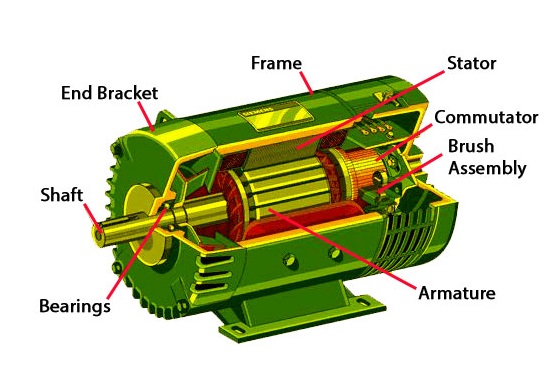
It is a comparatively powerful and small machine, particularly an internal-combustion system in an automobile, motorboat, or the like. A person or thing uses motion, mainly a contrivance, as a steam system that receives and converts energy from some natural source to utilize it in running machinery. All of them are called electric motor.
What is an Engine?
The word “engine” originates from the Latin term “Ingenium.” An engine is an instrument or system (mechanical, electrical, chemical, or even human, social, or political) which has a result as an output. For example, a bomb can be considered an engine. A crane, a water-powered mill, or a political party are also an engine. Gradually through the years, “engine” became associated mainly with fire, boilers, bombs, and furnaces. Shortly, any system tended to get explode or hot. A prime mover of a motor was called “the engine” in the 20th century. James Watt put the term “steam” in front of the engine to identify it from other systems of that time.
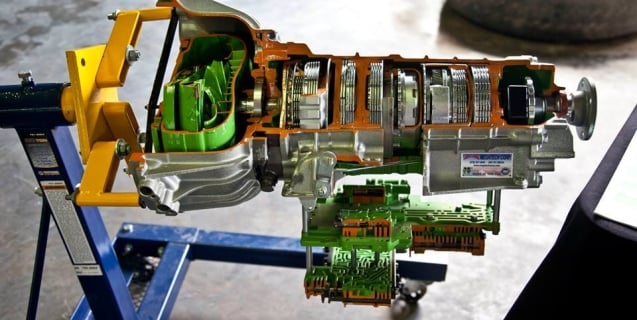
Engines are originally the devices that transform any form of energy to bring about mechanical outputs. These are constructed of cylinders and pistons. These may be divided into several groups based on their function. An electrical engine is an instrument that converts electrical power to mechanical output; a device converting heat power to mechanical form is called the combustion engine. Similarly, a device making use of pressurized liquids is introduced as a hydraulic engine.
Engines also have some particular definitions and types in industries, including:
- A system for converting thermal power into mechanical output or power to generate force and motion
- A fire engine
- A railroad locomotive
- An instrument or machine utilized in warfare, as a battering ram, catapult, or piece of artillery
- Any mechanical contrivance
- An instrument of torture, particularly the rack
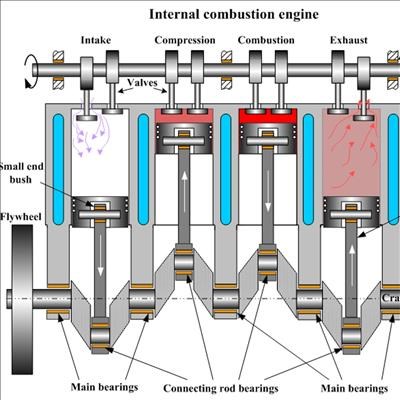
The torture systems notwithstanding, the usual denominator here is modifying or converting energy to create motion. Whether it is electrical, thermal, mechanical, nuclear, or otherwise. The result is the motion. The differentiator seems to be that systems contain their own fuel source to produce motion, while a motor operates based on an external source. Many would say an engine employs fuel, while a motor uses mechanical or electrical power to create motion. Visit here to explore more about the differences between motor and engine.
What about the vehicle that has both of them? An engine energized by fuel and an electric motor. It can be introduced as the Hybrid. It’s the brave modern world of keeping up with what the users want, and the user wants an automobile that is more friendly with the environment, more economical, but still has that “cool” feature.
The automobiles of the past, present, and future all share usual properties, but at the same time, the motor vehicle is continuously evolving. Developments in the automotive industry are occurring at a quick pace, so staying on the cutting edge of modern technology is vital if you tend to pursue a career in the automotive industry. Professional technicians command progressively high wages across the nation, and the demand for these situations is growing.
Read More about Aspiring Handyman
Key Differences Between Motor and Engine
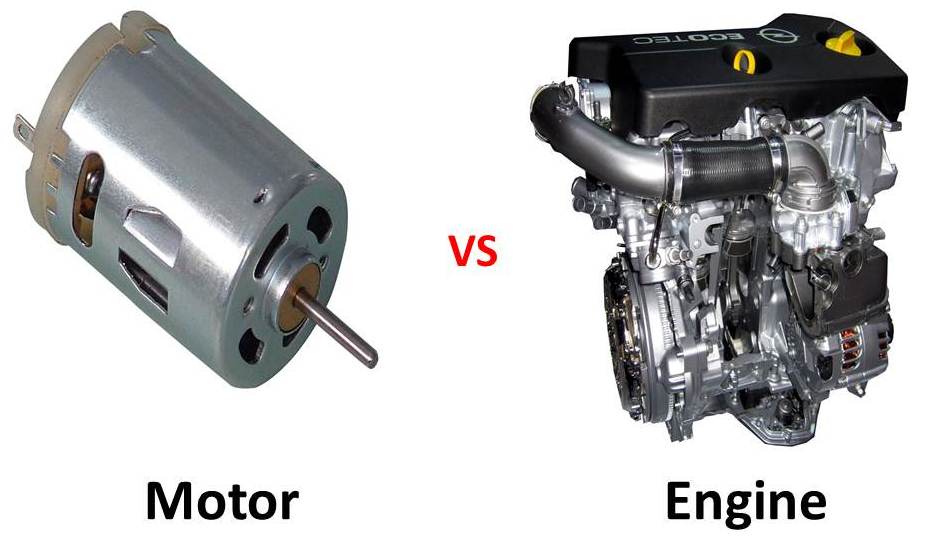
Definition
A motor is a machine, particularly one energized by electricity or internal combustion, that supports motive power for a vehicle or another system with moving parts. An engine is a machine with moving components that converts power into motion.
Synonyms
Transformer, turbine, cylinder, generator, and mechanism are the synonyms of motor, while weapon, appliance, diesel, instrument, and tool are the synonyms of an engine.
Types
Motor types are DC motor, AC motor, Synchronous motor, Induction motor, one-phase induction motor, and Three-phase induction motor. Engine types are Heat engine, Combustion engine, Internal combustion engine, External combustion engine, and Air-breathing combustion engine.
History
The first electrical motor was invented by physicist Frank Julian Sprague in the year 1886. That was able to move at a constant velocity under a varied range of load and thus derived motoring performance.
Simple systems, such as the oar and club (examples of the lever), are prehistoric. More complex engines are employing animal power, human power, wind power, water power, and even steam power date back to antiquity. Human energy was focused on the use of ordinary engines, such as the windlass, capstan, or treadmill, and with pulleys, ropes, and block and tackle configurations; this power was transmitted commonly with the forces multiplied and the velocity reduced.
Word Origin
The term “motor” was derived from Late Middle English (indicating a person who imparts motion): from Latin, identically ‘mover’, based on ‘movere ‘to ‘move’.
The term “engine” was originated from Middle English (already also as ingine): from Latin Ingenium ‘talent, device’, from Old French engin.
Works with
The motor works with electricity, while an engine operates based on fuels.
The Main Function
The main function of the motor is to transform electricity into motion. The basic performances of the engine including:
- The spark plug in the system supports the spark that is needed to ignite the air and fuel mixture.
- Valves permit air and fuel to enter the combustion chamber and later let the exhaust exit.
- Piston and Piston rings supply a sealing edge between the interior of the cylinder and the exterior of the piston.
- As the piston moves down and up due to the controlled explosions, it causes the connecting rod to slide. This then causes the crankshaft to slide as well as it is attached to the connecting rod, in a circular movement due to the configuration of the piston, combining rod and crankshaft.
- Surrounding the crankshaft, the sump includes some amount of oil.
Made up of
The motor is made up of stators and rotors. An engine is made up of cylinders and pistons.
Energy Uses
A motor provides energy using different kinds. An engine utilizes energy in the required type.
Converts
A motor converts mechanical power into hydraulic energy. The engine employs energy in a special form.
Advantages/Benefits
The advantages of a motor are low initial cost, long life, low maintenance requirements, high efficiency, automated control, no fossil fuel, labor cost savings, and occupational safety. The advantages of the engine are low maintenance cost, peppy drive, not produce excessive noise, and environmentally friendly.
Disadvantages
The disadvantages of a motor are portability, demand charges, remote locations, and speed control. The disadvantages of an engine are using more fuel, high overall cost and more pollutions in diesel types.
Summary
- A motor transforms electrical energy into mechanical form, while an engine converts several other forms of energy into mechanical output.
- An engine is a mechanical system that employs a fuel source to produce an output.
- The word “engine” is mostly utilized to refer to a reciprocating engine (internal combustion or steam), while the term “motor” is commonly used to refer to a rotating system such as an electric motor.
- An engine is constructed from pistons and cylinders, while a motor is constructed of rotors and stators.
FAQs about Motor vs Engine
Is there a difference between engine and motor?
Both engines and motors are used by people, but engines run on fuel while motors run on electricity. While the motor turns electrical energy into mechanical energy, the engine translates different fuel types into mechanical power.
Which is better engine or motor?
Compared to internal combustion engines, electric generators are also much more effective. This indicates that while only 20% of electrical energy is wasted as heat, the other 80% can be used for movement. On the other hand, only about 25% of the energy produced by an internal combustion engine can be used for movement.
How does an engine or motor work?
A stationary cylinder and a moving piston make up the motor. The piston is propelled by the increasing combustion vapors, which turn the crankshaft. This action ultimately propels the axles of the car through the powertrain’s gearing system.
What is the purpose of a motor engine?
An engine is a piece of equipment that changes chemical energy into mechanical energy, causing movement. In the case of automobiles, the most common fuels used by engines, such as the ones that power them, are petroleum and diesel.
What is the advantage of motor over engine?
Cars with electric generators work much better than cars with internal combustion engines (ICEs). Compared to a gas combustion engine, which converts less than 40% of electrical energy into kinetic energy, an electric motor does so at a rate of over 85%.
Download Motor vs Engine PDF
If you want to reference this article at any time, you can download it in PDF format.
linquip.com-Differences Between Motor and Engine
Watch Videos about Motor vs Engine
For more information about Motor vs Engine, watch the following video.
Buy Equipment or Ask for a Service
By using Linquip RFQ Service, you can expect to receive quotations from various suppliers across multiple industries and regions.
Click Here to Request a Quotation From Suppliers and Service Providers
Read More In Linquip
- Differences Between Motor and Generator
- The Difference Between Diesel Engine and Petrol Engine: which one best work for you?
- Differences Between Engine and Transmission
- What is the Principle of Electric Motor: The Concise Answer
- What is Starter Motor: Comprehensive Overview
- Everything You Need To Know About The Difference Between DC Motor and AC Motor
- What is Axial Flux Motor: the benefits and the distinctions with other types
- What is Motor Shaft?
- What is ECM Motor : Discover the working, the Good and the Bad

